
NIOSH
@NIOSH
Official Twitter account of the National Institute for Occupational Safety and Health (NIOSH). We are part of @CDCgov. Privacy Policy http://bit.ly/3LMxIp7
This is the authentic, official Twitter account of the National Institute for Occupational Safety and Health (@NIOSH). You can verify our identity by confirming our handle at: cdc.gov/socialmedia/to…
Did you know it could take about one week for the body to adjust the new times for sleeping, eating, and activity? Find tips to adjust to the time change: bit.ly/2Z8zT2J

NIOSH’s Coal Worker Health Surveillance Program will be offering black lung screenings in West Virginia and Maryland. Screenings are free and confidential. Appointments are recommended but walk-ins are welcome. Learn more: bit.ly/3ynb5Fw
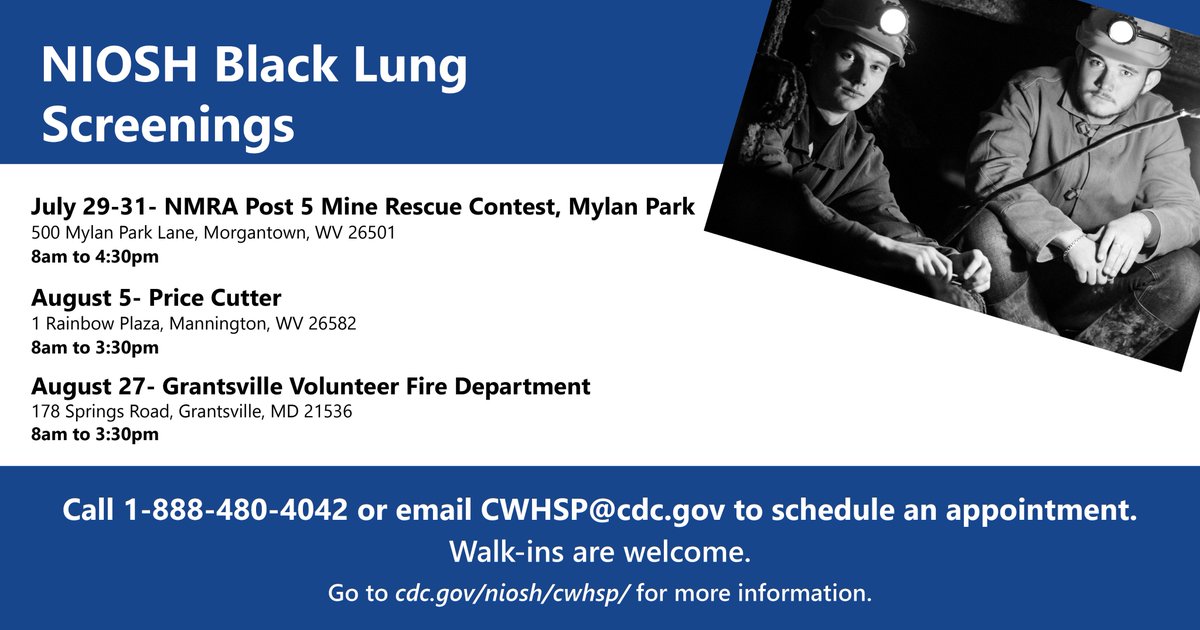
NIOSH’s Coal Worker Health Surveillance Program will be offering black lung screenings in West Virginia and Maryland. Screenings are free and confidential. Appointments are recommended but walk-ins are welcome. Learn more: bit.ly/3ynb5Fw
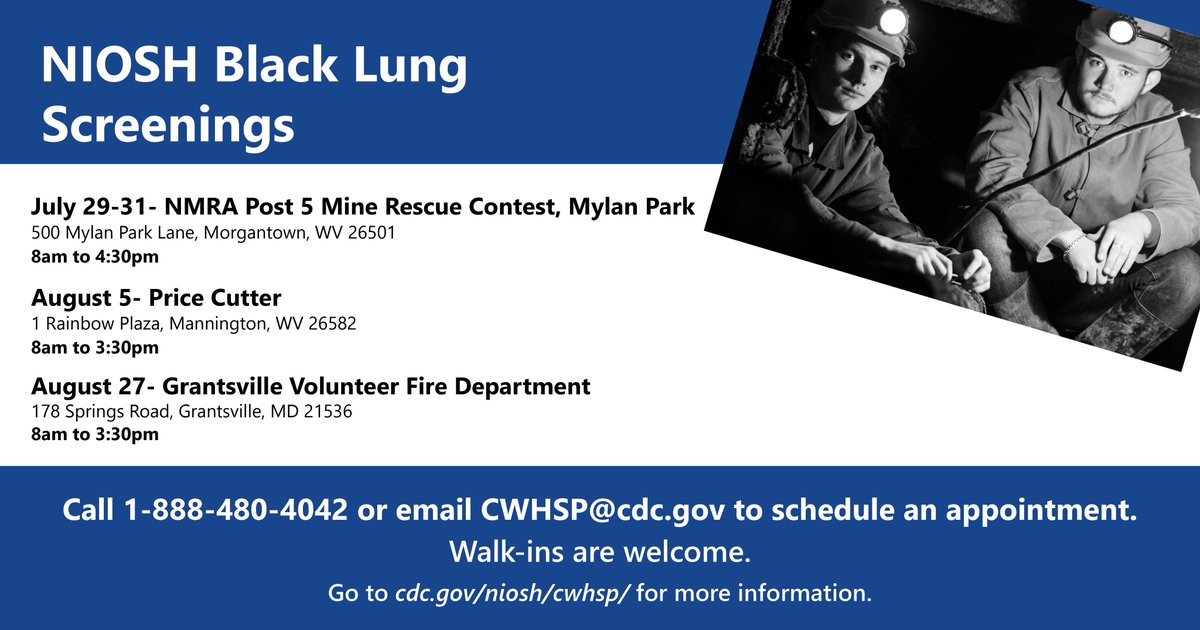
NIOSH’s Coal Worker Health Surveillance Program will be offering black lung screenings in Pennsylvania and West Virginia. Screenings are free and confidential. Appointments are recommended but walk-ins are welcome. Learn more: bit.ly/3ynb5Fw
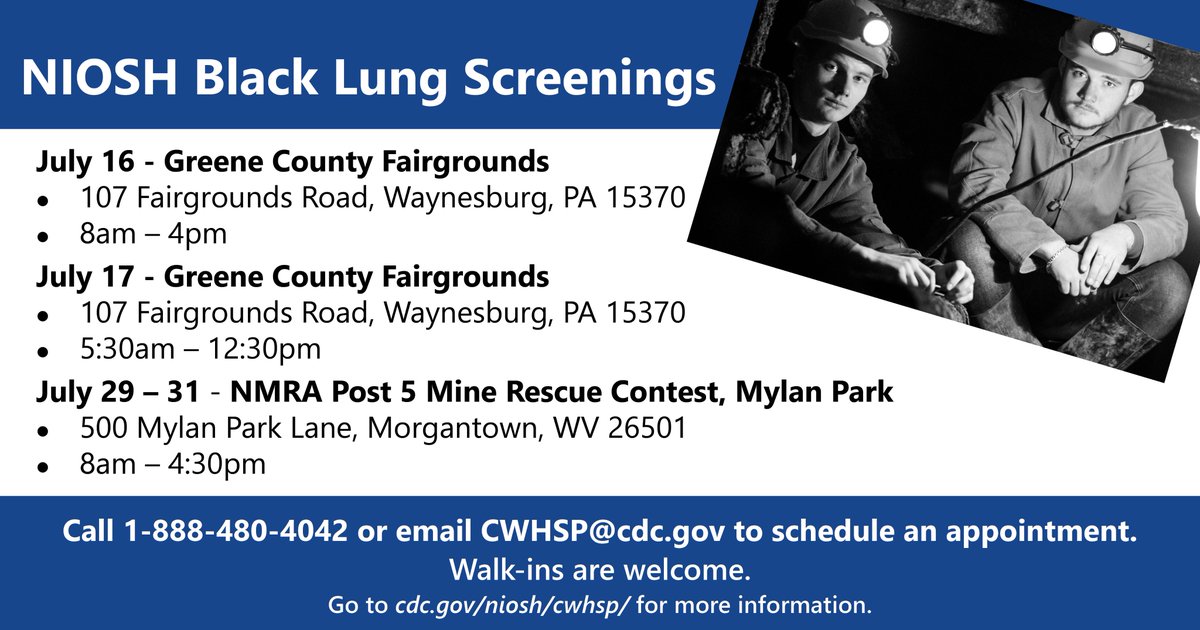
NIOSH’s Coal Worker Health Surveillance Program will be offering black lung screenings in Pennsylvania and West Virginia. Screenings are free and confidential. Appointments are recommended but walk-ins are welcome. Learn more: bit.ly/3ynb5Fw
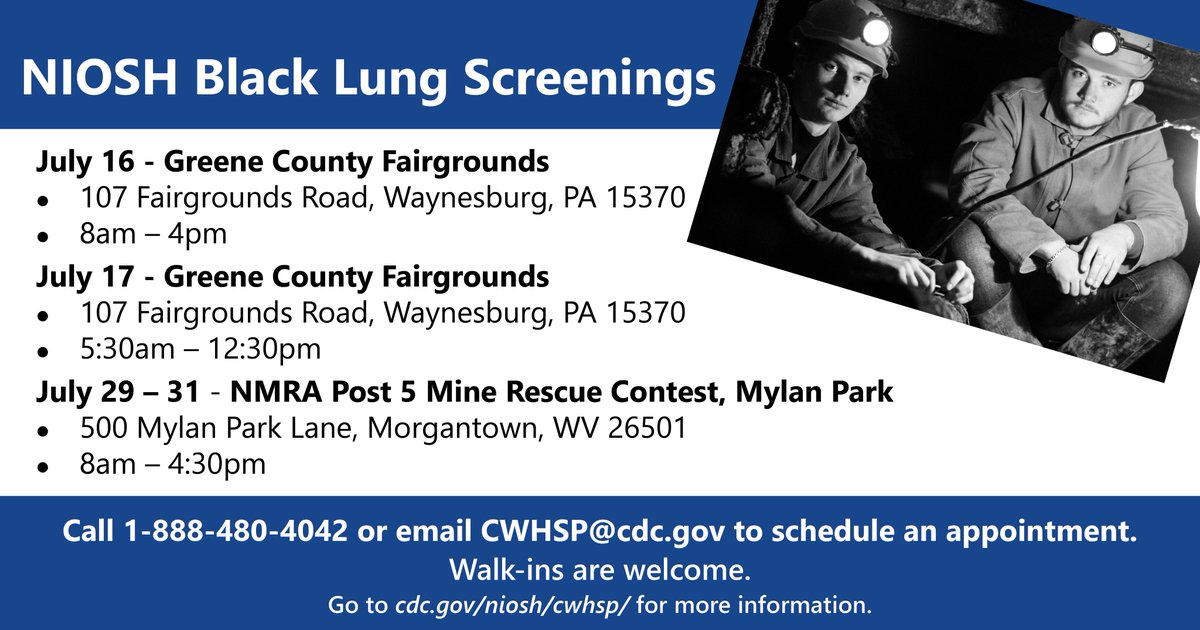
Follow these ladder safety tips and find more ways to stay safe when working on ladders: bit.ly/3FvdLnZ

Each year 22 million workers are exposed to hazardous noise levels at work. Increasing the distance between the workers and the noise source can help reduce workers’ noise exposure. Learn more ways to prevent occupational hearing loss: bit.ly/3Y1inc4
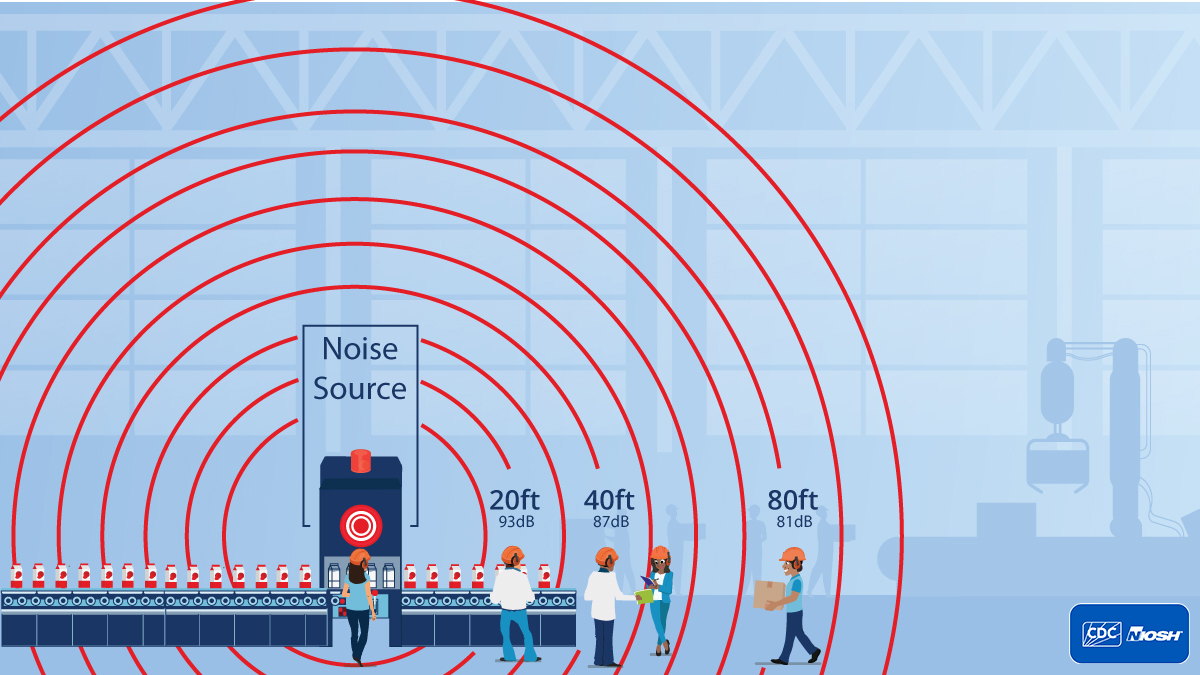
Ladder falls can happen anywhere, not just at work. Using a ladder puts you at risk for a ladder-related fall injury. Find tips to stay safe when using a ladder: bit.ly/3FvdLnZ

Oil and gas workers drive long distances to reach well sites that are often in remote areas. Long trips with long shifts can result in fatigue. Fatigued or drowsy driving is a major cause of crashes in this industry. Find resources: bit.ly/428kZXE

Sleep can affect your work. Shift work, long work hours, and the recent time change may impact your sleep. Learn more: bit.ly/2Z8zT2J

Idiopathic pulmonary fibrosis (IPF) caused or contributed to almost 68,000 deaths in 2020-2022. Workers in certain industries and occupations may be at higher risk. Consider work history in those with possible IPF. Learn more: bit.ly/41GB1bb
Clocks spring forward this weekend. The time change creates a higher risk for errors and injuries at work, at home, and while driving. It can take about one week for your body to adjust to the new time. Find tips to keep you and your workers safe: bit.ly/3TomGvF

Even above freezing is working in cold. Chilblains are caused by repeated skin exposure to temperatures just above freezing to as high as 60°F. Chilblains are permanent. Find out how to prevent them: bit.ly/4ghj1bB

Ladder falls can happen to anyone, at work or at home. The NIOSH Ladder Safety App can help you avoid ladder-related injuries: bit.ly/4b90qNG

Did you know wet feet lose heat 25 times faster than dry feet? Keep your feet warm and dry. Trench foot can occur in wet conditions even if it's 60 degrees F out. Learn more: bit.ly/4ghj1bB

Noise is part of everyday life, but noise-induced hearing loss is preventable. Find tips to help employers and safety professionals protect workers from noise-induced hearing loss and create a safer, quieter workplace: bit.ly/4hdHCi5
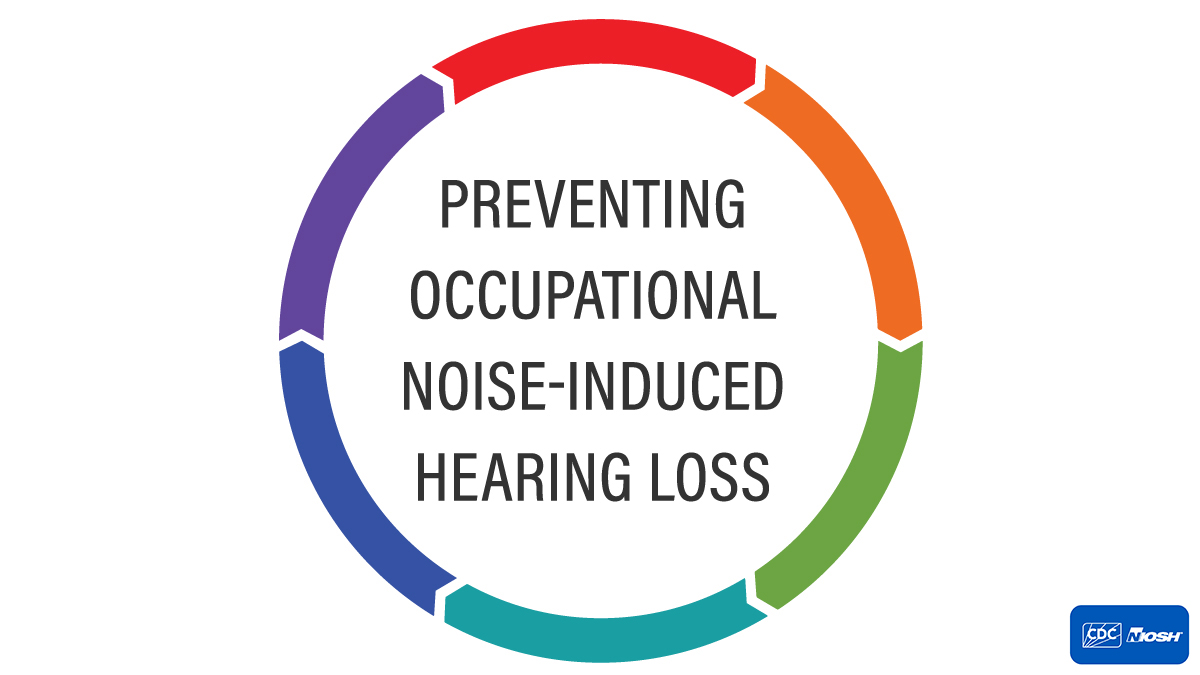
Employers: Find information on implementing a cold-related illness and injury prevention program in our Workplace Solutions and protect your workers when working in cold: bit.ly/3HZ6rxH

Concerns about time off, cost, and confidentiality interfered with mental health care-seeking among U.S. health care providers in 2022–2023. Supportive supervisors help reduce the effect of work stressors on mental health: bit.ly/40knfZU

Who can join the #NationalFirefighterRegistry (NFR) for Cancer? All U.S. firefighters – with or without cancer, active or retired, in any specialty. This #FFCancerMonth, sign up for this unique registry to understand and reduce cancer risk: cdc.gov/nfr

A new blog post highlights the most accessed NIOSH information in 2024. Find out what was most popular in 2024 on the NIOSH Science Blog: bit.ly/4afxN0V
